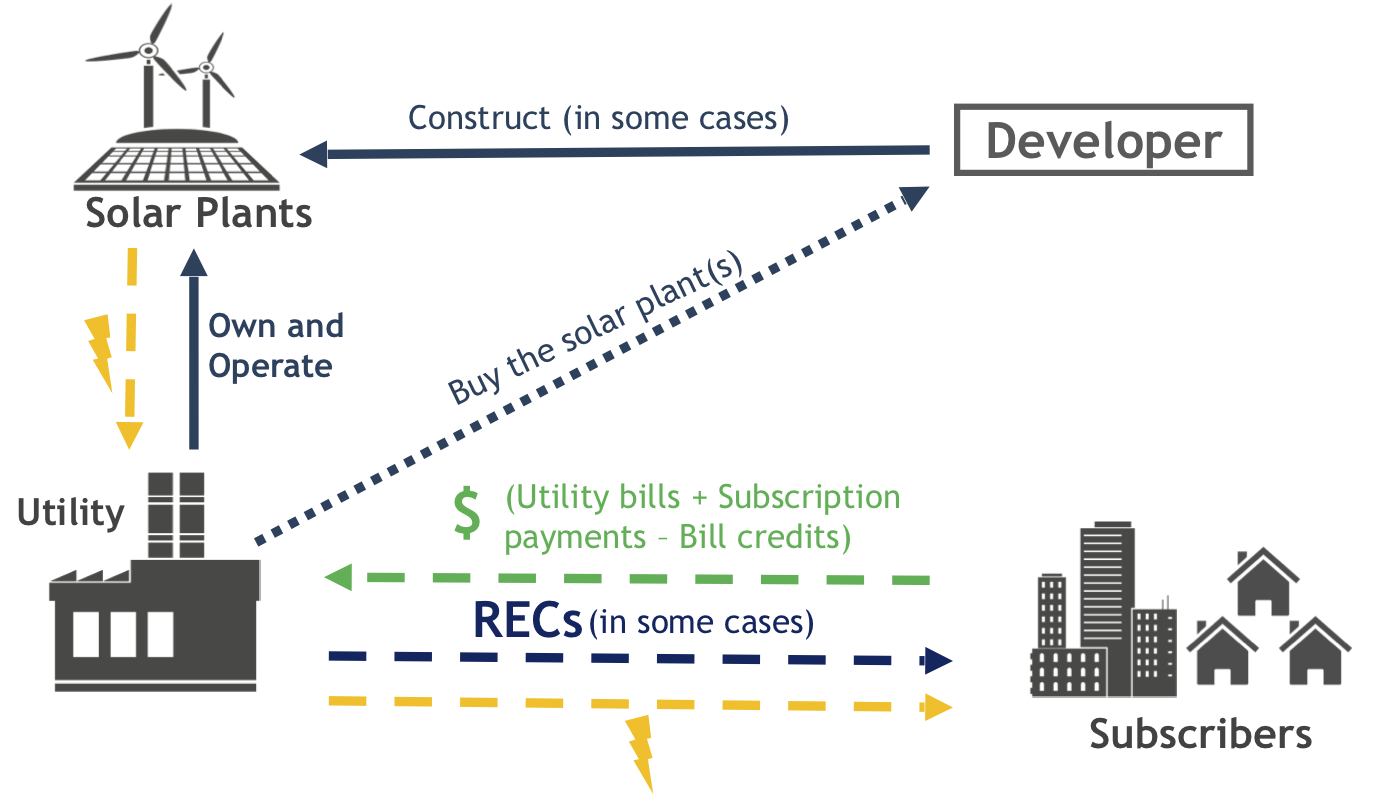In the utility ownership model, the utility administers and owns the solar project. This model can be a good option for communities because utilities are likely to have the legal, financial, and program management infrastructure to implement a community solar project. These projects are often financed by the utility, grants, and/or ratepayer subscriptions.
The adjacent diagram shows how this ownership model works. The utility first identifies the project and then buys the solar plant from the developer. It then works with the developer to construct the project. Once the project is built, the utility owns and operates the solar plant. Throughout the lifetime of the system, the utility provides electricity and, in some cases, provides renewable energy certificates (RECs) to the subscribers of the system. Subscribers pay their regular utility bill plus a community solar subscription payment and, in return, receive bill credits for their share of solar production. The credit on their electric bills is proportional to the amount of the project they are subscribed to on either a kilowatt (kW) or kilowatt-hour (kWh) basis.
Key considerations for utility-owned programs include:
- Incentive allocations: how are incentives distributed to subscribers?
- REC treatment: does the utility keep the renewable energy certificates or are they distributed to subscribers?
- Security compliance: are investors able to capture the investment tax credit (ITC)?

